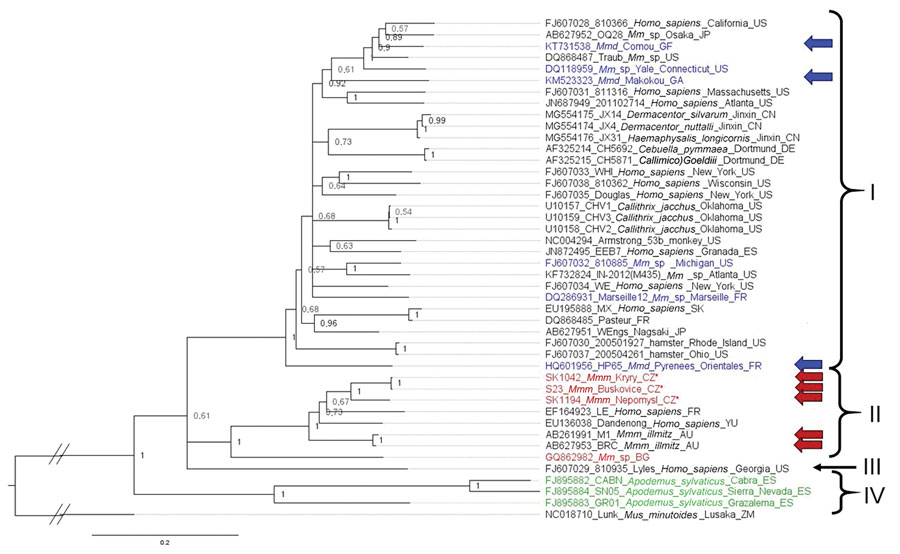Volume 27, Number 10—October 2021
Research
New Perspective on the Geographic Distribution and Evolution of Lymphocytic Choriomeningitis Virus, Central Europe
Figure 4

Figure 4. Phylogenetic analysis performed on nucleic acid sequences of glycoprotein gene of lymphocytic choriomeningitis virus (LCMV) sequences using Bayesian inference. Bayesian posterior probabilities were used to assess node support. Lunk virus from Mus minutoides (Africa) was used as outgroup. All sequences obtained in this study were submitted to GenBank (accession nos. MZ568450–7, MZ558311–3, MZ568449). Names of LCMV strains are composed of GenBank accession number, strain name, host species, and place and country of origin (if known) or isolation. Country code is defined as ISO code (https://countrycode.org). Colors indicate LCMV strains isolated from wild rodents where there is a match between expected mouse subspecies on the basis of geographic region and sampling area: blue, Mus musculus domesticus; red, M. musculus musculus. Arrows indicate known origin of mouse subspecies on the basis of genetic data, asterisks (*) indicates LCMV strains from this study, and lineages are indicated by roman numerals. LCMV strains isolated from Apodemus sylvaticus are indicated in green (lineage IV). Scale bar indicates nucleotide substitutions per site. Mmd, M. musculus domesticus; Mmm, M. musculus musculus; Mmm_lab, laboratory mouse strain derived from M. musculus musculus; Mm_lab, laboratory mouse strain; Mm_sp, Mus musculus spp.